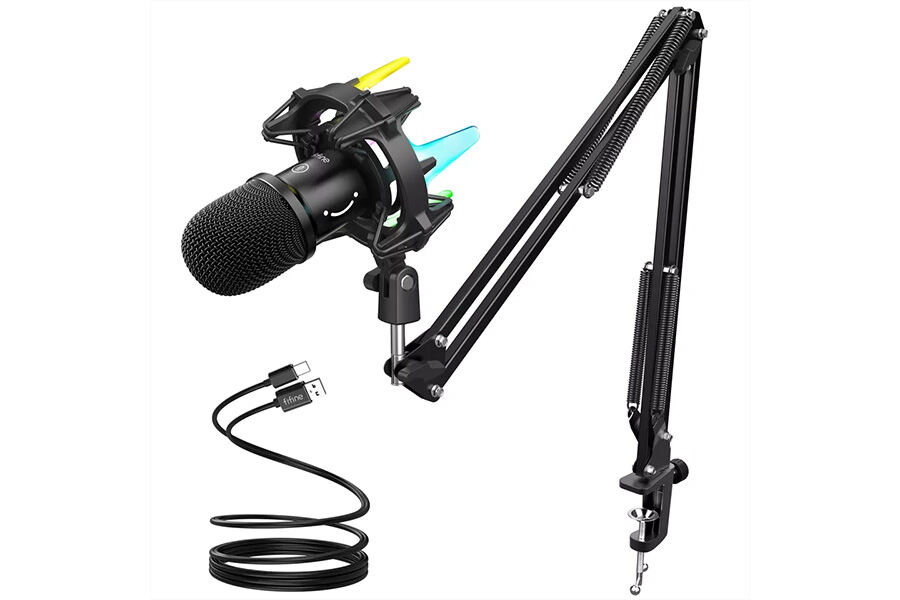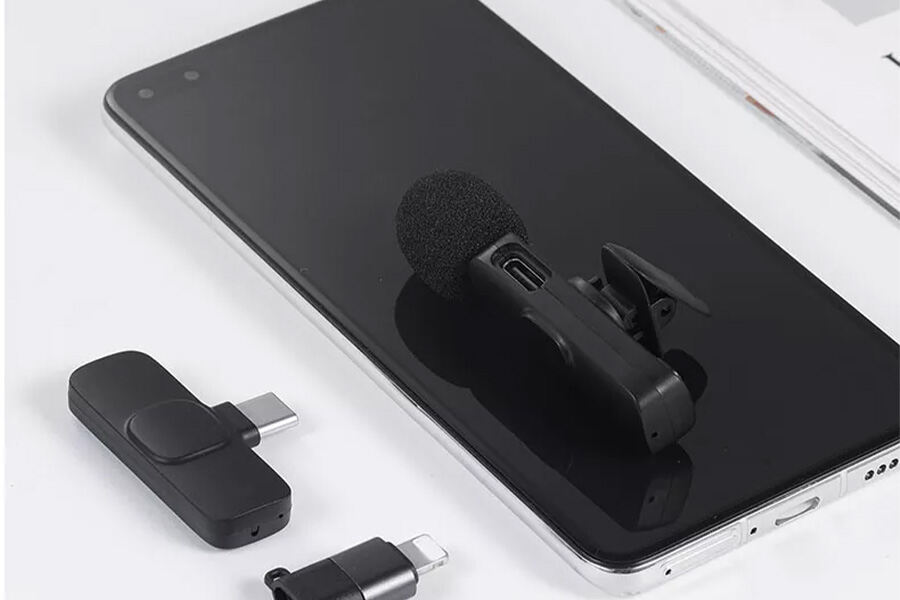A recent Statista report estimated that there were around 1 billion online gamers in the world as of May 2022. To put this into perspective, it is about 12.5% of the world population—or North America and South America together.
With such a sizable user base backing the rapidly expanding online gaming industry, it is anticipated that sales of related accessories like gaming chairs, speakers, and microphones will soar along with the number of gamers. Read on to discover how popular gaming microphones are among gamers, tips for sourcing them, and the leading types.
Table of Contents
The market prospect of gaming microphones
What to look for when sourcing gaming microphones
Leading types of gaming microphones
Stay loud and clear
The market prospect of gaming microphones
One may easily catch a glimpse of how lucrative the gaming microphone market could be by first looking at the growth of the global online gaming industry. The worldwide online gaming market is expected to grow at a compound annual growth rate (CAGR) of 16.9% throughout the forecast period from 2021 to 2027. This forecast is inclusive of all online gaming platforms covering mobile devices, PC, laptops, and gaming consoles. Valued at $40 billion back in 2020, the market is expected to hit around $120 billion by 2027.
Meanwhile, probably a more direct approach to assessing the wide usage of gaming microphones is to refer to a monthly hardware survey conducted by the world’s largest gaming platform—Steam. A Statista report revealed that, as of October 2020, 100% of Steam users used microphones while using the platform.
While the total number of participants was not revealed by Steam, a separate study discovered that there were a maximum of around 23.19 million concurrent Steam users in the same month, and the total number of active users was estimated at 120 million in 2020. Asides from Steam data, the gaining popularity of esports worldwide is another obvious pushing factor for sales of gaming microphones, with communication recognized as one of the most important skills for the esports pro.
What to look for when sourcing gaming microphones
Microphone specifications
Many might think that microphone sourcing does not involve the consideration of many specifications since these devices do not look complicated and typically only come with a few buttons. On the contrary, there are at least four crucial determining quality features to be considered. Let’s dive in to understand as much as possible:
Polar patterns
Often also known as pickup pattern, this is essentially the sensitivity of the mic in terms of incoming sound waves originating from various angles or directions. A mic’s directionality can generally be divided into 3 classes: unidirectional, bidirectional, and omnidirectional.
A unidirectional mic, also called cardioid or directional mic, is the most popular polar pattern among the three. A cardioid pickup pattern basically gives you the focus of sound from both the front and side of your direction. Hence the area directly in front of the microphone has the most sensitivity, whereas the area behind it has the least sensitivity. Microphones with this feature are a well-recognized versatile choice for podcasting, streaming, and even music or singing performances!
A bidirectional mic, on the other hand, is considered the best way to pick up sound from both the front and back directions. However, it is not as sensitive to its sides, so it has a figure-8 pickup pattern. The equal sensitivity for both front and back directions makes it an excellent choice for conference calls, interviews as well as any presentation that involves interactions with the audience.
Finally, as the name suggests, microphones with omnidirectional mode can pick up sound equally from all directions. The all-inclusive sensitivity makes them suitable for public events where speeches and live performances are involved.
Despite the three distinctive pick-up directions from these polar patterns, thanks to the innovative microphone makers, nowadays there are plenty of gaming microphones that support all of these patterns. To get a better idea about the way polar patterns work, one can refer to the polar response graph depicted in the following picture, which clearly captures the figure-8 shape of the bidirectional mic for example:
Frequency
A microphone’s frequency range is a representation of the range of sounds it can detect, including how such an output fluctuates within the range. With Hertz (Hz) as its measuring unit, it is determined by the number of sound waves that cycle through in a second. Simply put, it represents the frequencies that the microphone is capable of picking up, and anything out of the range will not be recorded.
Since wavelength and frequency are inversely related, every increase in frequency basically means a reduction in wavelength, which raises the pitch and the sharpness of the sound. That is why microphones with higher Hz are normally regarded as having much clearer voice quality, and this can be extremely crucial in multiplayer games such as Counter-Strike: Global Offensive (CS: Go) and PlayerUnknown’s Battlegrounds (PUBG).
Compatibility/connectivity
The connectivity is especially important if one is sourcing gaming microphones that are to be used on different game consoles. This is because there are two main different inputs for gaming microphones—the USB and the 3.5mm inputs. Hence the connectivity may result in a compatibility issue in case of a wrong input choice. It is pretty standard for PC gamers to opt for USB microphones instead of mics with 3.5mm jacks since USB mics are generally the safest choice. However, some gaming consoles support only one of the two main inputs, so it is recommended to consider the connectivity to be targeted to avoid compatibility problems.
Types
The two main types of microphones are condenser and dynamic microphones. Which one to choose will depend on the regular use and the users’ environment. Since these two are among some of the most popular microphones for gaming, let’s explore each of them in more detail in the next section of this article.
Sound quality
Since the main purpose of getting a gaming microphone is all about elevating and creating an immersive gaming experience, audio quality is indeed among one of the most pressing needs when it comes to the selection of a good gaming microphone. Noise cancellation or noise reduction, as well as clear natural-sounding vocal and gain/volume control functions, for example, are some of the additional features that a great sound quality microphone may have.
Flexibilities
Video gaming, especially competitive gaming such as esports, requires quick, reflective responses throughout the games. In this sense, a gaming microphone that allows flexibility and easy movement is definitely helpful and welcoming to gamers.
Flexibilities include some seemingly minor built-in features such as a record button, mute button, volume control, or more sophisticatedly, accessories such as an adjustable mic stand or a shock mount. A shock mount is designed to use suspensions, which are common in the form of metal tubes, to shield the gaming microphone from contact with a stable surface (usually the computer table/ TV desk) and thus minimize or get rid of undesirable vibration, noise, and mechanical rattling via the suspension.
Leading types of gaming microphones
Condenser gaming microphone
Condenser microphones are different from dynamic microphones not only in terms of shapes and designs. They are a high-end type that comes with higher quality and is suitable for studio-grade recording. This is because condenser microphones are very sensitive in picking up various sound sources and able to capture much higher frequencies, which results in sharper and clearer sound.
Nonetheless, from a sound quality perspective, it is also important to keep in mind that condenser microphones can be pretty extreme in picking up background noise due to their sensitivity. They also have inherent self-noise, which is an inevitable byproduct of an active microphone that works with phantom power—the DC electric power that empowers the active electronic circuitry-equipped microphones through microphone cables.
In contrast, most dynamic microphones are passive microphones because they rely on electromagnetic induction rather than electricity and have no self-noise issue at all. When selecting a condenser gaming microphone, however, one should always pay attention to an acceptable self-noise rating at around 16-19 dB-A according to the Neumann company, a veteran microphone maker established in 1928.
Due to the highly sensitive nature of condenser gaming microphones, it is not uncommon for the manufacturers to offer condenser gaming mics with tripod stands as a standard package or versatile condenser mic options designed with easy installation for both tripod stand and shock mount in mind. One may also source a complete condenser gaming mic solution a the built-in mic stand and shock mount, such as the one shown below:
Dynamic gaming microphone
Given that dynamic microphones are commonly used for stage performances, they commonly represent the stereotypical perception of what regular microphones are. Dynamic microphones are indeed among the most widely used types of microphones in view of their affordability, durability as well as versatility. For example, with noise-canceling features, there are dynamic gaming microphones that function as live-streaming microphones, while also being suitable for singing and recording.
Despite being equipped with so many different functionalities, dynamic gaming microphones remain affordable, especially a simple wired dynamic gaming microphone, such as the one illustrated in the picture below:

At the same time, for anyone who is looking forward to establishing a unique gaming microphone brand, a low-cost, customizable dynamic gaming microphone can be one of the models to ponder upon.
Clip-on gaming microphone
Also known as lavalier mics or lapel mics, clip-on gaming microphones are portable miniature mics that users attach to their clothing and close to their mouths. Equally small and wearable, their working mechanism looks somewhat similar to microphones attached to headsets or headphones, especially in terms of their same omnidirectional polar pattern. Clip-on mics are generally classified into two main polar patterns—omnidirectional or unidirectional. As a clip-on mic is essentially an electret condenser mic, omnidirectional clip-on mics can be extremely sensitive as they pick up sound sources from all directions with high sensitivity.
That is to say, the conveniences offered by a clip-on microphone in terms of its easy setup and mobility are actually trade-offs of careful mic placement and usage. Despite these potential issues, it is generally popular among YouTubers, podcasters, and gamers for its simplicity, reasonable sound quality, especially from a speech perspective, and affordable price range. With a clip-on microphone, the majority of desktop microphone limitations—such as mobility and flexibility—are eliminated.
Most clip-on gaming microphones are connected via 2.4Ghz wireless receivers. Clip-on gaming microphones with USB-C (USB type-c) connectors can be easily linked to most laptops, tablets, and mobile phones. There are also lavalier gaming mics that offer two-in-one receivers, which include an iPhone/lightning receiver to support easy plug-and-play connectivity to Apple devices. The lavalier microphone depicted in the picture below, for example, features such two-in-one solution:

Stay loud and clear
The strong growth of the worldwide online gaming market and the increasing awareness of gamers on the importance of communication to “buff” their overall gaming experience have driven the interest in gaming microphones to a new height. Among the first things that wholesalers should look at when sourcing gaming microphones are major specifications such as polar patterns, frequencies, compatibility, connectivity, and microphone types.
Aside from the specifications, wholesalers should also attach great importance to the sound quality and flexibility that a gaming microphone can provide to ensure an adequate purchase. Dynamic gaming microphones, condenser gaming microphones, and clip-on gaming microphones are the three leading types of gaming microphones that are well-received by gamers in general. Visit Alibaba Reads for more wholesale sourcing ideas and suggestions today.




